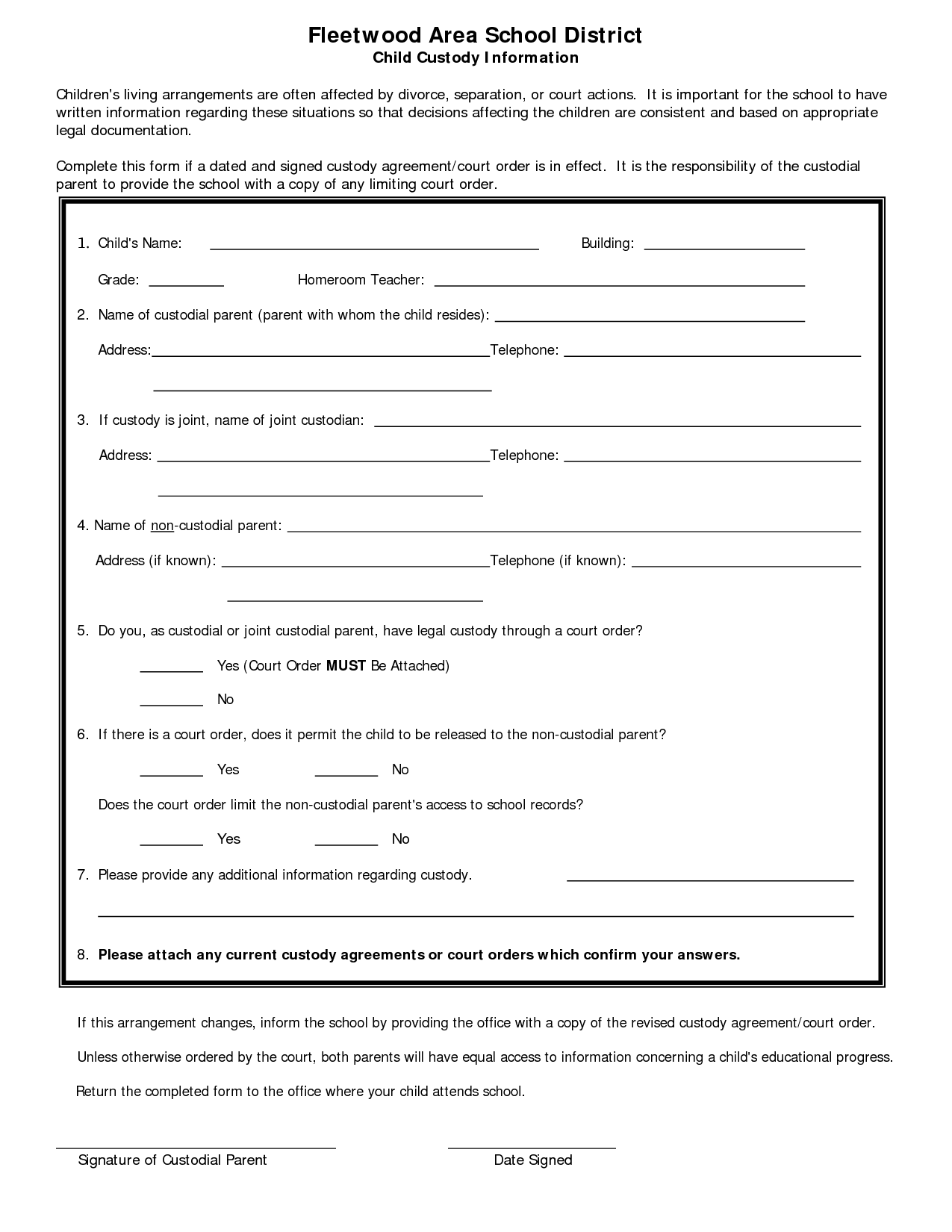5 Steps to File Child Custody Paperwork Efficiently

Filing for child custody can be an emotionally taxing process, but understanding the steps involved can make it more manageable. Whether you're seeking sole custody or joint custody arrangements, here's a comprehensive guide to filing child custody paperwork efficiently.
Step 1: Understand Your State’s Laws

Each state has its own legal framework for child custody cases. Start by:
- Researching your state’s specific statutes on child custody.
- Understanding terms like legal custody, physical custody, sole custody, and joint custody.
- Checking whether your state requires mediation before filing for custody.
Learning about these legal nuances is crucial to tailor your approach effectively.
Step 2: Gather Necessary Documentation

Documentation is key in custody cases. Collect:
- Birth certificates of the child or children involved.
- Proof of residency for both parents.
- Details on each parent’s income, living arrangements, and work schedules.
- Any existing court orders or agreements related to custody.
Having a well-organized file can expedite the legal process.
Step 3: Drafting the Custody Petition

The custody petition is a legal document where you state:
- Your proposed custody arrangement.
- The reasons supporting your request.
- How the arrangement serves the best interests of the child.
This document must be meticulously prepared to ensure all necessary details are included:
- Identify the court where the case will be filed.
- Provide personal information about both parents and the child.
- Include any information that might influence the court’s decision, like past abuse or neglect.
⚠️ Note: If you’re unsure about legal drafting, consider consulting with or hiring a family law attorney for help.
Step 4: Filing and Serving the Paperwork

Once your petition is prepared, follow these steps:
- File the petition in the family court of your jurisdiction.
- Pay the filing fees or submit a fee waiver if eligible.
- Serve a copy of the paperwork to the other parent, following legal procedures for service.
Proper service ensures the other parent has the opportunity to respond, which is critical for moving the case forward.
Step 5: Attend Court Hearings

After filing and serving:
- Prepare for mediation if required by your state.
- Attend all scheduled hearings. The court will:
- Make temporary or permanent orders.
- Review evidence, which could include testimonies, affidavits, and expert opinions.
- Be ready to present your case effectively.
Here are key points to remember:
- Always bring all relevant documentation to court.
- Dress appropriately, as first impressions matter.
- Stay calm and respectful during proceedings, which can influence the judge's perception.
🔔 Note: Consider hiring a lawyer if your case is complex or if you feel overwhelmed by the legal process.
By following these steps, you can manage the process of filing for child custody more efficiently. Keeping organized, understanding the legal landscape, and preparing thoroughly for each phase of the process can significantly improve your chances of achieving a favorable outcome. Remember, the best interest of the child is always the guiding principle in custody cases, so any arguments or evidence should align with this principle.
What should I do if I can’t afford a lawyer for my child custody case?

+
You might be eligible for legal aid services in your area or might be able to file for a fee waiver if you meet certain financial criteria. Additionally, many courts have resources or self-help centers where you can get guidance on representing yourself, known as pro se representation.
How can I modify a child custody order if my circumstances change?

+
To modify a custody order, you need to file a motion for modification with the court, providing evidence that there has been a significant change in circumstances or that the current arrangement no longer serves the child’s best interests.
Can a judge decide in favor of custody arrangements that I didn’t request?

+
Yes, a judge has the authority to make decisions that differ from what was initially requested by either parent if they believe another arrangement better serves the child’s best interests. This might include assigning joint custody, or modifying visitation schedules.



